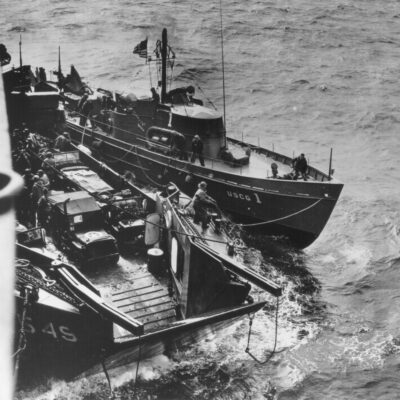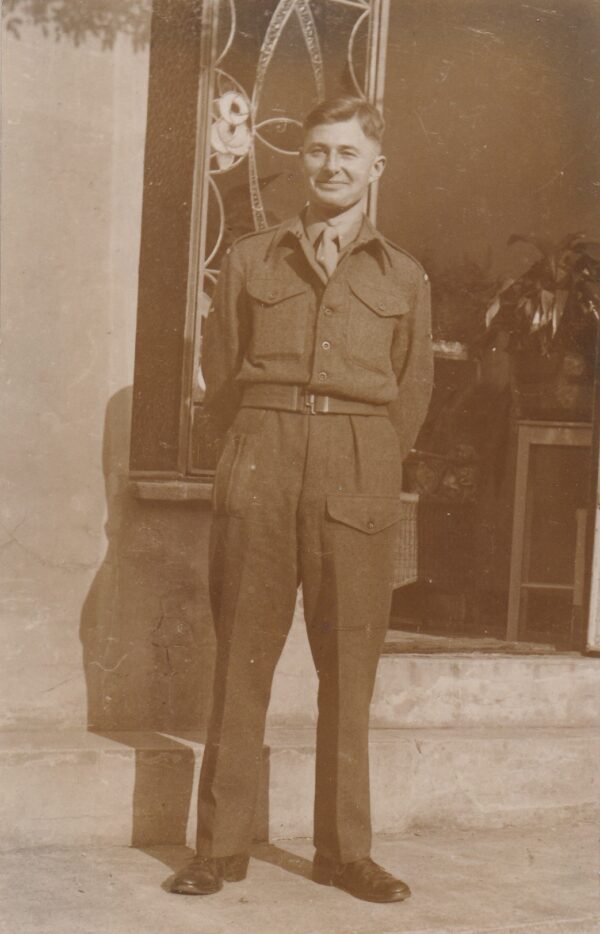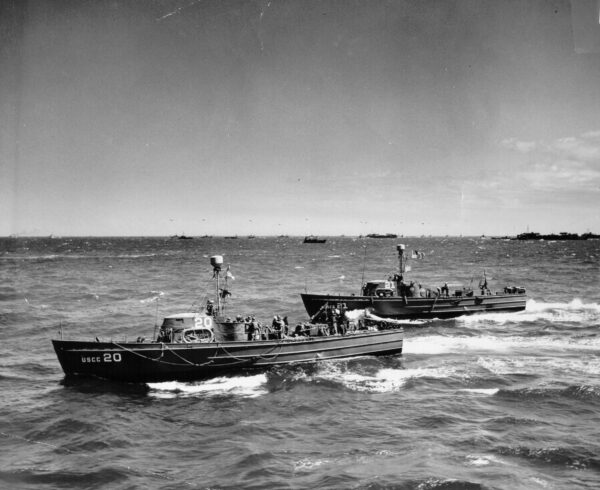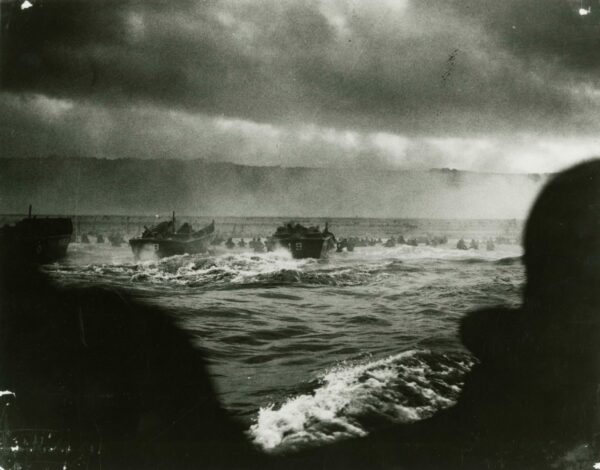
Edmund Lowry Priestley, known to all as “Eddy,” was born in Scotland on June 13, 1916, and raised in the English Lake District. He spent his early life in Chester as a telephone engineer and later as a “Special Faults Investigator.” Eddy was called up for duty in 1943 and, on August 17, he became “#14662602 Priestley” with the rating of signalman in the Royal Corps of Signals. He then embarked on training and special courses, which took him to exotic U.K. locations, such as Ballymena, Catterick, Dollis Hill, Cambridge, and Thetford. After this whirlwind tour of the British Isles, he found himself prepared to deploy to the Far East with about 50 other signallers.

Meanwhile, President Franklin Roosevelt suggested that Operation Neptune, the naval operation to support the D-Day landings, needed a rescue flotilla. The Coast Guard had 60 83-foot patrol boats on anti-submarine duty with trained crews that were available. These cutters were constructed of wood and powered by gasoline engines, hence their nickname the “matchbox fleet.” For D-Day, the service designated the fleet of small cutters “Flotilla One.”

While the signalers were waiting for the next transport to the Far East, Priestley met with a group of Royal Signalmen assigned to the landings at Normandy. One of them with the same position as Priestley fell sick, so Priestley took his place. Soon, Priestley found himself on board the Liberty Ship, S.S. Saminver, steaming for Normandy. As Priestley recalled frequently in later years, things did not go according to plan on D-Day.

The British D-Day objective on Gold Beach had not been taken by the end of the day and, when his landing craft approached the beach, the Beach Master on shore sent them back out to sea. They motored out to sea, but no one knew where to go. While they were deciding what to do, their engine failed, and they found themselves drifting helplessly. As they floundered, someone on board realized that they were in fact drifting into a minefield.
The Royal Signalmen in the stricken landing craft shouted for help, but nearby watercraft were too busy to pay attention. It was then, when all seemed lost, that a United States Coast Guard vessel appeared out of nowhere. Its crew assessed the situation, and a Coast Guardsman grabbed a rope, jumped off the rescue boat, and swam with it as fast as he could to Priestley’s landing craft. The rope was secured, and the cutter towed the landing craft and its occupants to safety.
Priestley and the signallers finally got ashore on D-Day+1 and set-up a communications centre at Saint-Martin-des-Entrées, just outside Bayeux. After Bayeux, Priestley’s crew moved on to Rouen and into Belgium. There, he spent some weeks in Brussels not just getting the networks in good working order but also making friends and going to the opera. He used his elementary school French skills and enjoyed queueing for seats with the locals even though he could have taken the best theatre seat as a soldier.

As the Allies pushed through France and Belgium, Priestley and the signalmen supported military forces restoring communications networks. When his unit finally arrived in Germany, Priestley’s work got grimmer as there was so much to repair. The civilians’ plight in war-ravaged Germany touched Priestley deeply, but at least the fighting was over.

Priestley set about restoring civilian services with his fellow signallers who had become close friends over the months. Together with their mascot, a rough looking terrier named “Jerry,” the Royal Signallers moved across Germany to restore communication networks. They had been ordered to leave Jerry behind, but the little guy ran after the trucks until he was exhausted. Priestley wrote in his journal “Advance into Germany halted! Couldn’t leave him behind. Stopped to pick him up. Took him to Bremen.” Well into 1946, Priestley’s crew worked at repeater stations located in the German towns of Accum, Bohmte and Bremen.

With hostilities concluding the previous year, the Royal Signallers’ work became less arduous, and Priestley grew anxious to return home. In 1942, before his call up, Priestley had met, and married Marjorie and they spent 68 happy years together. Priestley retired to Peterborough, England, and he was fit enough to play a part in the D-Day 50th Anniversary celebrations. He also returned to Normandy to revisit “his” beach and other locations he recalled from the war. Priestley died on Nov. 14, 2010—he was 94 years old. He would not have seen 66 of those years were it not for the bravery of the men of the United States Coast Guard.
Priestley never forgot how that Coast Guardsman had saved his life and how the Royal Signalmen had watched as the brave American swam powerfully through the waves to save strangers he would never see again. After they secured the tow rope, the signalmen tried to thank the Coast Guardsmen, but he just waved and swam back to his rescue boat never to be seen again.
Editor’s note: Coast Guard Rescue Flotilla One rescued nearly 500 Allied personnel on June 6, 1944. During the first hours of the D-Day assault, they saved 194 men off Omaha Beach, 157 off Utah Beach and 133 off Gold, Juno, and Sword beaches. Over the course of the Normandy invasion Flotilla One’s cutters saved 1,438 men.
National Coast Guard Museum insider tip: Visitors to the National Coast Guard Museum will have the opportunity to see artifacts from Rescue Flotilla One, and learn more about the Coast Guard’s vital role in the D-Day invasion, in the World War 2 Exhibit on Deck 3.
